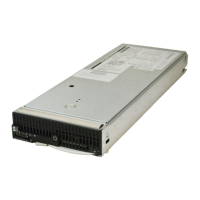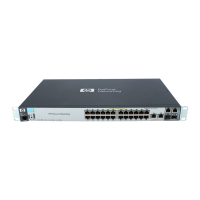Fabric OS Administrator’s Guide 119
53-1002745-02
Routing policies
4
Displaying the current routing policy
1. Connect to the switch and log in using an account with admin permissions.
2. Enter the aptPolicy command with no parameters.
The current policy is displayed, followed by the supported policies for the switch.
Example of the output from the aptPolicy command
In the following example, the current policy is exchange-based routing (3) with the additional AP
dedicated link policy.
switch:admin> aptpolicy
Current Policy: 3
3 : Default Policy
1: Port Based Routing Policy
2: Device Based Routing Policy (FICON support only)
3: Exchange Based Routing Policy
0: AP Shared Link Policy
1: AP Dedicated Link Policy
Port-based
routing
The choice of routing path is based only on the incoming port and the destination domain. To
optimize port-based routing, DLS can be enabled to balance the load across the available output
ports within a domain.
For FC routers only: When an FC router is in port-based routing mode, the backbone traffic is
load-balanced based on SID and DID. When an FC router is in exchange-based routing mode, the
backbone traffic is load-balanced based on SID, DID, and OXID.
Whatever routing policy a switch is using applies to the VE_Ports as well. For more information on
VE_Ports, refer to the Fibre Channel over IP Administrator’s Guide.
Exchange-based routing
The choice of routing path is based on the Source ID (SID), Destination ID (DID), and Fibre Channel
originator exchange ID (OXID) optimizing path utilization for the best performance. Thus, every
exchange can take a different path through the fabric. Exchange-based routing requires the use of
the Dynamic Load Sharing (DLS) feature; when this policy is in effect, you cannot disable the DLS
feature.
Exchange-based routing is also known as Dynamic Path Selection (DPS). DPS is where exchanges
or communication between end devices in a fabric are assigned to egress ports in ratios
proportional to the potential bandwidth of the ISL or trunk group. When there are multiple paths to
a destination, the input traffic is distributed across the different paths in proportion to the
bandwidth available on each of the paths. This improves utilization of the available paths, thus
reducing possible congestion on the paths. Every time there is a change in the network (which
changes the available paths), the input traffic can be redistributed across the available paths.
This is a very easy and non-disruptive process when the exchange-based routing policy is engaged.
